Статьи журнала - Компьютерная оптика
Все статьи: 2511

Brain tumor classification using deep convolutional neural networks
Статья научная
This study presents a comparative analysis of various convolutional neural network (CNN) models for brain tumor detection on MRI medical images. The primary aim was to assess the effectiveness of different CNN architectures in accurately identifying brain tumors. Multiple models were trained, including a custom-designed CNN with its specific layer architecture, and models based on Transfer Learning utilizing pre-trained neural networks: ResNet-50, VGG-16, and Xception. Performance evaluation of each model in terms of accuracy metrics such as precision, recall, F1-score, and confusion matrix on a test dataset was carried out. The dataset used in this study was obtained from the openly accessible Kaggle competition "Brain Tumor Detection from MRI." This dataset consisted of four classes: glioma, meningioma, no tumor (healthy), and pituitary, ensuring a balanced representation. Testing four models revealed that the custom CNN architecture, utilizing separable convolutions and batch normalization, achieved an average ROC AUC score of 0.99, outperforming the other models. Moreover, this model demonstrated an accuracy of 0.94, indicating its robust performance in brain tumor classification on MRI images.
Бесплатно
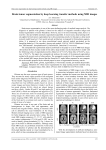
Brain tumor segmentation by deep learning transfer methods using MRI images
Статья научная
Brain tumor segmentation is one of the most challenging tasks of medical image analysis. The diagnosis of patients with gliomas is based on the analysis of magnetic resonance images and manual segmentation of tumor boundaries. However, due to its time-consuming nature, there is a need for a fast and reliable automatic segmentation algorithm. In recent years, deep learning methods applied to brain tumor segmentation have shown promising results. In this paper, a deep neural network model based on U-Net neural network architecture is proposed for brain glioma segmentation. It is proposed to use deep convolutional neural network models pre-trained on the ImageNet dataset as U-Net encoders. Among such models, VGG16, VGG19, Mobilenetv2, Inception, Efficientnetb7, InceptionResnetV2, DenseNet201, DenseNet121 were used. The computational experimental analysis performed in the paper on a set of MRI brain images showed that the best encoder model for the above deep models was the DenseNet121 model with the following values of segmentation metrics Mean IoU of 91.34 %, Mean Dice of 94.26 %, Accuracy of 94.22 %. The paper also comparatively analyses the results of the proposed segmentation method with several works of other authors. The comparative analysis of the segmentation results of the studied MRI images showed that the DenseNet121 model either surpassed or was comparable to the models proposed in the refereed papers in terms of segmentation accuracy metrics.
Бесплатно
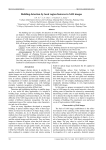
Building detection by local region features in SAR images
Статья научная
The buildings are very complex for detection on SAR images, where the basic features of those are shadows. There are many different representations for SAR shadow. As result it is no possible to use convolutional neural network for building detection directly. In this article we give property analysis of SAR shadows of different type buildings. After that, each region (ROI) prepared for training of building detection is corrected with its own SAR shadow properties. Reconstructions of ROI will be put in a modified YOLO network for building detection with better quality result.
Бесплатно
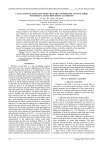
Статья научная
Photonic crystal fiber as a new type of optical fiber has been extensively applied because of its unique properties. The effective mode area of optical fiber is an important parameter, which has a great influence on the performance of optical fiber. In this study, digital image processing algo-rithm was used for preprocessing to improve the accuracy of calculation of mode field area. Then the effective mode field area of optical fiber was calculated using Matlab based Gauss fitting method. Take single-mode fiber G.652 as an example, the effective mode field area was calculated using the traditional algorithm and digital image processing algorithm respectively. It was found that the results obtained using digital image processing algorithm were within the allowed error range, suggesting the effectiveness of the algorithm. Then the calculation of the effective mode area of the triangular lattice photonic crystal fiber further verified the reliability of the algorithm.
Бесплатно
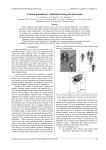
Camera parameters estimation from pose detections
Статья научная
Some computer vision tasks become easier with known camera calibration. We propose a method for camera focal length, location and orientation estimation by observing human poses in the scene. Weak requirements to the observed scene make the method applicable to a wide range of scenarios. Our evaluation shows that even being trained only on synthetic dataset, the proposed method outperforms known solution. Our experiments show that using only human poses as the input also allows the proposed method to calibrate dynamic visual sensors.
Бесплатно
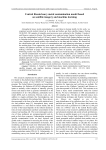
Central Russia heavy metal contamination model based on satellite imagery and machine learning
Статья научная
Atmospheric heavy metal contamination is a real threat to human health. In this work, we examined several models trained on in situ data and indices got from satellite images. During 2018-2019, 281 samples of naturally growing mosses were collected in the Vladimir, Yaroslavl, and Moscow regions in Russia. The samples were analyzed using Neutron Activation Analysis to get the contamination levels of 18 heavy metals. The Google Earth Engine platform was used to calculate indices from satellite images that represent summarized information about sampling sites. Statistical and neural models were trained on in situ data and the indices. We focused on the classification task with 8 levels of contamination and used balancing techniques to extend the training data. Three approaches were tested: variations of gradient boosting, multilayer perceptron, and Siamese networks. All these approaches produced results with minute differences, making it difficult to judge which one is better in terms of accuracy and graphical outputs. Promising results were shown for 9 heavy metals with an overall accuracy exceeding 89 %. Al, Fe, and Sb contamination was predicted for 3,000 and 12,100 grid nodes on a 500 km2 area in the Central Russia region for 2019 and 2020. The results, methods, and perspectives of the adopted approach of using satellite data together with machine learning for HM contamination prediction are presented.
Бесплатно
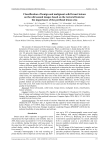
Статья научная
The amount of ultrasound (US) breast exams continues to grow because of the wider endorsement of breast cancer screening programs. When a solid lesion is found during the US the primary task is to decide if it requires a biopsy. Therefore, our goal was to develop a noninvasive US grayscale image analysis for benign and malignant solid breast lesion differentiation. We used a dataset consisting of 105 ultrasound images with 50 benign and 55 malignant non-cystic lesions. Features were extracted from the source image, the image of the gradient module after applying the Sobel filter, and the image after the Laplace filter. Subsequently, eight gray-level co-occurrence matrices (GLCM) were constructed for each lesion, and 13 Haralick textural features were calculated for each GLCM. Additionally, we computed the differences in feature values at different spatial shifts and the differences in feature values between the inner and outer areas of the lesion. The LASSO method was employed to determine the most significant features for classification. Finally, the lesion classification was carried out by various methods. The use of LASSO regression for feature selection enabled us to identify the most significant features for classification. Out of the 13 features selected by the LASSO method, four described the perilesional tissue, two represented the inner area of the lesion and five described the image of the gradient module. The final model achieved a sensitivity of 98%, specificity of 96%, and accuracy of 97%. Considering the perilesional area, Haralick feature differences, and the image of the gradient module can provide crucial parameters for accurate classification of US images. Features with a low AUC index (less than 0.6 in our case) can also be important for improving the quality of classification.
Бесплатно

Coherent field phase retrieval using a phase Zernike filter
Статья научная
Aberrations of the coherent wavefront are analyzed using a phase Zernike filter. Developed iterative methods allow us to design a filter that decomposes the analyzed light field into a set of diffraction orders with amplitudes proportional to the circular Zernike polynomials. We also apply the algorithm to the calculation of the light field phase from measurements of the modules of decomposition coefficients. Operation of a 25-channel filter is simulated.
Бесплатно
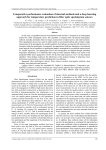
Статья научная
In this study, an algorithm based on convolutional neural networks is employed as an interrogation method for a fiber specklegram sensor. This algorithm is compared with conventional interrogation methods, including correlation between images, measurement of optical power, and radial moments. Fiber specklegram sensors have room for improvement as conventional methods only consider a single characteristic of the specklegram for variable prediction, thus failing to leverage the full spectrum of information within the specklegram. Consequently, the approach put forth here introduces a convolutional neural network for the extraction of specklegram features, accompanied by an artificial neural network for variable regression. The specklegrams used in this investigation are obtained through simulating temperature disturbances in a multimode fiber using the Finite Elements Method. The results reveal prediction RMSE errors ranging from 10.26°C for the first radial moment to 1.42°C for the proposed algorithm. These findings underscore the effectiveness of the proposed strategy in enhancing sensor performance and robustness, all while upholding their cost-efficiency.
Бесплатно
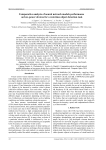
Статья научная
A computer vision based real-time object detection on low-power devices is economically attractive, yet a technically challenging task. The paper presents results of benchmarks on popular deep neural network models, which are often used for this task. The results of experiments provide insights into trade-offs between accuracy, speed, and computational efficiency of MobileNetV2 SSD, CenterNet MobileNetV2 FPN, EfficientDet, YoloV5, YoloV7, YoloV7 Tiny and YoloV8 neural network models on Raspberry Pi 4B, Raspberry Pi 3B and NVIDIA Jetson Nano with TensorFlow Lite. We fine-tuned the models on our custom dataset prior to benchmarking and used post-training quantization (PTQ) and quantization-aware training (QAT) to optimize the models’ size and speed. The experiments demonstrated that an appropriate algorithm selection depends on task requirements. We recommend EfficientDet Lite 512×512 quantized or YoloV7 Tiny for tasks that require around 2 FPS, EfficientDet Lite 320×320 quantized or SSD Mobilenet V2 320×320 for tasks with over 10 FPS, and EfficientDet Lite 320×320 or YoloV5 320×320 with QAT for tasks with intermediate FPS requirements.
Бесплатно
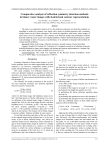
Статья научная
The study is a comparative analysis of two fast reflection symmetry axis detection methods: an algorithm to refine the symmetry axis found with a chain of skeletal primitives and a boundary method based on the Fourier descriptor. We tested the algorithms with binary raster images of plant leaves (FLAVIA database). The symmetry axis detection quality and performance indicate that both methods can be used to solve applied problems. Neither method demonstrated any significant advantage in terms of accuracy or performance. It is advisable to integrate both methods for solving real-life problems.
Бесплатно
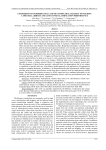
Статья научная
The main aim of this research work is to compare k-nearest neighbor algorithm(KNN)super-vised classification with migrating means clustering unsupervised classification (MMC) method on the performance of hyperspectral and multispectral data for spectral land cover classes and de-velop their spectral library in Samara, Russia. Accuracy assessment of the derived thematic maps was based on the analysis of the classification confusion matrix statistics computed for each classi-fied map, using for consistency the same set of validation points. We were analyzed and compared Earth Observing-1 (EO-1) Hyperion hyperspectral data to Landsat 8 Operational Land Imager (OLI) and Advance Land Imager (ALI) multispectral data. Hyperspectral imagers, currently avail-able on airborne platforms, provide increased spectral resolution over existing space based sensors that can document detailed information on the distribution of land cover classes, sometimes spe-cies level. Results indicate that KNN (95, 94, 88 overall accuracy and .91, .89, .85 kappa coeffi-cient for Hyp, ALI, OLI respectively) shows better results than unsupervised classification (93, 90, 84 overall accuracy and .89, .87, .81 kappa coefficient for Hyp, ALI, OLI respectively). Develop-ment of spectral library for land cover classes is a key component needed to facilitate advance ana-lytical techniques to monitor land cover changes. Different land cover classes in Samara were sampled to create a common spectral library for mapping landscape from remotely sensed data. The development of these libraries provides a physical basis for interpretation that is less subject to conditions of specific data sets, to facilitate a global approach to the application of hyperspectral imagers to mapping landscape. In addition, it is demonstrated that the hyperspectral satellite image provides more accurate classification results than those extracted from the multispectral satellite image. The higher classification accuracy by KNN supervised was attributed principally to the ability of this classifier to identify optimal separating classes with low generalization error, thus producing the best possible classes’ separation.
Бесплатно
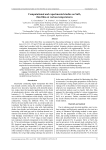
Computational and experimental studies on SnO2 thin films at various temperatures
Статья научная
Tin oxide (SnO2) thin films was prepared by dip-coating technique at various bath temperatures (313, 333, 353 and 373 K) and annealed at 673 K in this study. And the obtained results were studied and correlated with the computational method. Scanning electron microscopy (SEM) investigation demonstrated that the prepared samples are spherical with agglomeration. The elemental analysis (EDAX) confirms the presence of Sn and O. Further, the SnO2 thin films microstructures are simulated, their thermodynamic and surface properties have been calculated. Micro-Raman spectra were recorded for the prepared samples. Micro-Raman results exhibit the first-order Raman mode E1g (475 cm-1) indicating that the grown SnO2 belongs to the rutile structure. In addition, the envelope method used for studying optical characteristics of the thin films from the transmittance spectra. The semiconducting nature of the films has been noticed from linear I-V characteristics. Furthermore, the electrical conductivity studies suggest that the highest conductivity samples acquire the lowest activation energy and their values are also in the semiconducting range.
Бесплатно

Computer controlling of writing beam in laser microfabrication of diffractive optics
Статья научная
Laser microfabrication of diffractive optics with continuous relief is based on the direct local action of focused laser radiation on the recording material. Control of writing beam parameters (beam power, spot size, waist position) is one of the main tasks in microfabrication using laser writing systems. Method of the control defines the correspondence between the fabricated microrelief of the diffractive optical element and a designed one. Complexity of this task consists in the necessity to take into account a wide range of factors: laser irradiation noises, non-linear characteristic curve of recording material, finiteness of spot size, influence of power modulation and surrounding on beam energy absorption, influence of beam waist position according to recording layer, dependence of characteristic curve of recording material on beam scanning speed, etc. In the present paper we consider a number of methods for computer controlling of writing beam making it possible to compensate or reduce the influence of these factors and improve the quality of DOE microfabrication. The results of experimental application of the developed methods to circular laser writing systems are discussed.
Бесплатно
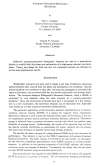
Computer generated microwave kinoforms
Статья научная
Reflective computer-generated holographic elements are used in a quasi-optical fashion to modify both the phase and polarisation of a high-power coherent microwave beam. Theory and desigh for both one and two component systems are discussed as well as some experimental results.
Бесплатно
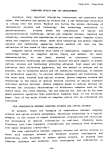
Computer optics and its development
Статья научная
The article consider prospects of the future development of the Computer Optics and its interrelation with the computer and optic sciences including the optical softwere and hardwere field, photon computer science.
Бесплатно
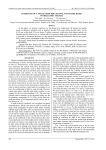
Conditions of a single-mode rib channel waveguide based on dielectric TiO2/SiO2
Статья научная
In this paper, we propose conditions for the design of a single-mode rib channel waveguide based on dielectric materials such as titanium dioxide (TiO2) and silicon dioxide (SiO2) for the 0.633-µm visible light. We also design Y-splitter structures, which show high-degree optical confinement and low bend losses at various radii of curvatures. Small radii of curvatures are extremely desirable in integrated photonics as they permit decreasing the dimensions but can also potentially reduce power consumption in the active devices.
Бесплатно
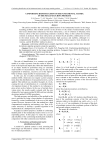
Conforming identification of the fundamental matrix in the image matching problem
Статья научная
The article considers the conforming identification of the fundamental matrix in the image matching problem. The method consists in the division of the initial overdetermined system into lesser dimensional subsystems. On these subsystems, a set of solutions is obtained, from which a subset of the most conforming solutions is defined. Then, on this subset the resulting solution is deduced. Since these subsystems are formed by all possible combinations of rows in the initial system, this method demonstrates high accuracy and stability, although it is computationally complex. A comparison with the methods of least squares, least absolute deviations, and the RANSAC method is drawn.
Бесплатно
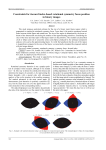
Constraints for Jaccard index-based rotational symmetry focus position in binary images
Статья научная
This study proposes analytical estimate for the size of a binary raster figure region which is guaranteed to contain the rotational symmetry focus. Focus here is the point a maximum Jaccard index between initial figure and rotated one. The size of the region is determined by the lower estimate of the intersection area during the rotation of the approximating primitives, considering the sizes of the inner and outer parts of the figure relative to the primitive. The smallest circumscribed circle or ellipse and sets of concentric circles and ellipses produced by the principal component analysis were used as the approximating figure. To verify the hypothesis that the size of the region is insignificant compared to the area of the figure, we numerically simulated the proposed method with test image datasets.
Бесплатно
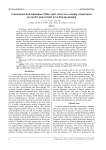
Статья научная
Nowadays, various materials are extensively utilized in various fields. These materials often cause invisible damage with the long-term service of machines. A health monitoring system for materials was presented to eliminate safety hazards as much as possible. This study proposed a fiber optic stress wave sensing system in view of Lamb wave damage imaging to address the limitations in the use of materials in some flaw detection systems. Meanwhile, Lamb waves with small propagation attenuation and long distance in the material were selected as the detection method. Then the fiber optic stress wave sensing system was used to carry out damage imaging. The imaging principle of wavelet packet decomposition was selected to avoid losing low-frequency information. The experiment demonstrated that compared to the original method in view of time correlation coefficient, the method used in this study improved the signal-to-noise ratio of damaged images by 1.0112 dB, higher accuracy, better imaging quality, and more pronounced output images. This research offers a theoretical foundation for the application of fiber optic stress wave sensing systems in the flaw detection, provides practical value for the practical application of Lamb waves, and has positive significance for the application of flaw detection in industry.
Бесплатно

